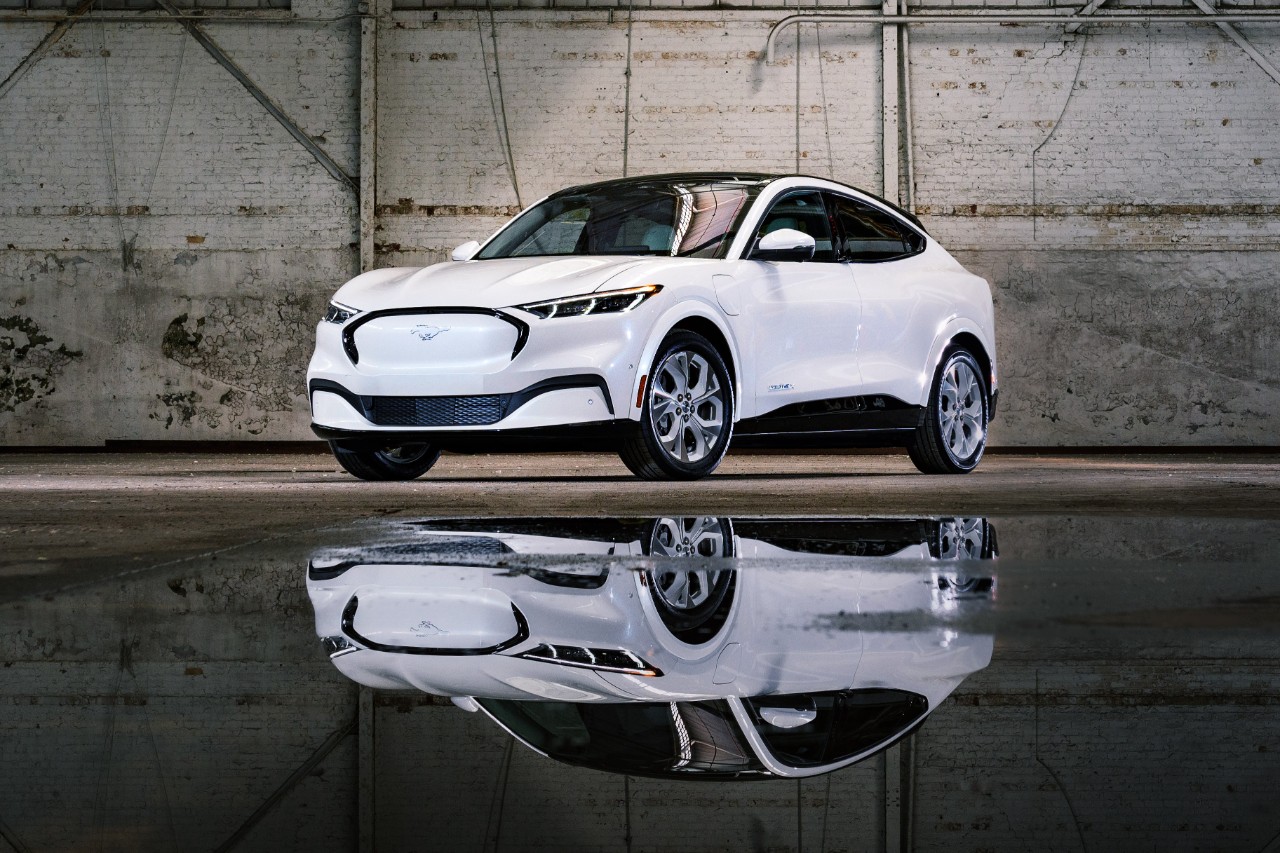There was certainly no shortage of announcements from the North American International Auto Show, or NAIAS, for the world to mull over. Ford's (F 1.52%) all-new 2015 F-150 pickup truck made its debut, featuring military-grade aluminum-alloy body panels that reduces the truck's weight by nearly 700 pounds and improves fuel efficiency. General Motors, meanwhile, unleashed the beastly 2015 Corvette Z06, which is expected to ship with "at least" 625 horsepower.
While these two announcements most certainly stole the show, there was one overlooked development that I found to be particularly interesting: Ford's 3-D printing homage.

Tucked away in a corner. Photo credit: John Rosevear.
Because the picture's resolution has been scaled down and is difficult to read, here's what it says:
We've added a new dimension to our design process.
- Ford ushers in the next manufacturing revolution by 3D-printing parts to represent production components.
- 3D printing improves quality in Ford vehicles by providing engineers more time and freedom to optimize and test parts.
- Ford's 500,000th printed auto part is a prototype engine cover for the all-new Ford Mustang.
- The next steps in Ford's 3D printing strategy are auto industry firsts -- mixed material applications, continuous 3D sand printing and direct metal printing.
Clearly, 3-D printing plays a very important role in Ford's design process, a role that's sure to be expanded in the future. In a highly competitive industry like autos, Ford knows it needs any competitive advantage it can get, and 3-D printing could help ensure its survival.
The ultimate commodity
In a world where every second matters, time has become the ultimate commodity for businesses competing in the marketplace. The businesses that know how to manage time the most effectively are positioning themselves to gain a sizable competitive advantage over their peers. The less time Ford spends waiting for a prototyped design to be made, the more time it can spend improving designs. Essentially, 3-D printing allows Ford to become a better vehicle maker because it can spend more time refining designs and less time waiting for prototypes to be manufactured.
In fact, 3-D printing typically reduces Ford's lead times for prototyped parts by one to two months. Just to be clear, I'm not only talking about a plastic shift-knob prototype for an upcoming Mustang. I'm talking about using 3-D printing to print a mold made from sand that can handle molten metal being poured into it. The end part could be something as complicated and large as an engine block. Therein lies the beauty of 3-D printing: It completely eliminates the need and expense of tooling that's required to make the same component with conventional manufacturing processes.
The next productivity leap
One of Ford's future 3-D printing strategies involves utilizing direct metal printing, which could help lessen lead times even further. Direct metal printing has a number of advantages over 3-D sand printing because it eliminates a number of steps out of the design and manufacturing process. Instead of designing an object in a 3-D rendering, analyzing that it can be casted, and then designing the mold, a direct metal printed object can just be designed and printed. The elimination of these pre-production steps could save a valuable amount of time, giving engineers a greater opportunity to improve upon designs.
Seeing that Ford is already a customer of ExOne's (XONE +0.00%) S-Max 3-D sand printer, it seems plausible that Ford will extend its relationship into ExOne's direct metal line of 3-D printing. ExOne's binder jetting metal printing technology uses an inkjet-style print head to chemically bond layers of powder metal together. After the layer is bonded, a roller deposits a fresh layer of material, and the process is repeated until the object is formed. Once the object has been printed, it is then fired in an industrial furnace to solidify the metal powder and strengthen the part.
Not the only game in town
Of course, Ford isn't the only auto company pursuing 3-D printing. General Motors, BMW, and even Tesla Motors all are using 3-D printing to help bring products to market faster and improve designs. Ford can gain an edge by pioneering new 3-D printing processes that haven't been utilized for automotive applications. Depending on how it improves Ford's efficiency of designing and bringing products to market, it could allow the company to move more swiftly than its competitors.
The real winners
Because Ford's future 3-D printing strategy is meant to push the boundaries of 3-D printing for automotive applications, it could ultimately create a winning scenario for many stakeholders of the company. If 3-D printing continues to improve the company's efficiency, it could lead to significant cost-savings across the design and manufacturing process, putting investors in a position to benefit. At the same time, 3-D printing could allow end customers to benefit because Ford's products continue to improve, which simultaneously helps improves the company's brand reputation over the long-term.
Ultimately, 3-D printing is not just about survival for Ford -- it's about giving Ford an opportunity to thrive in a competitive automotive marketplace.






